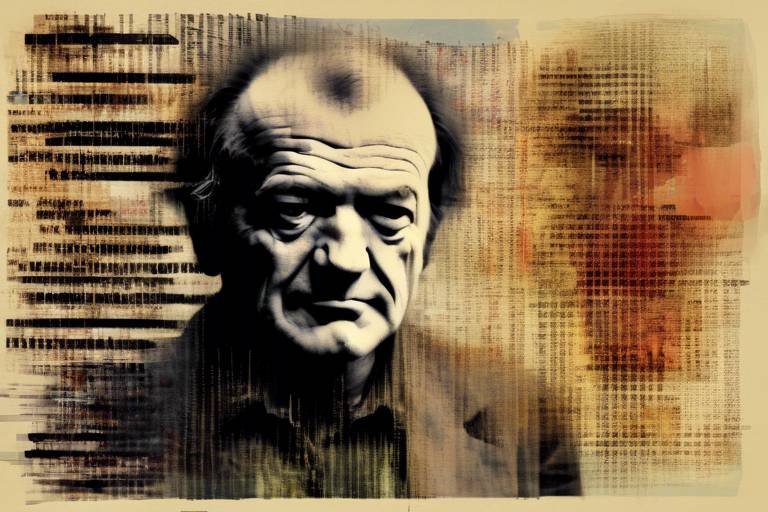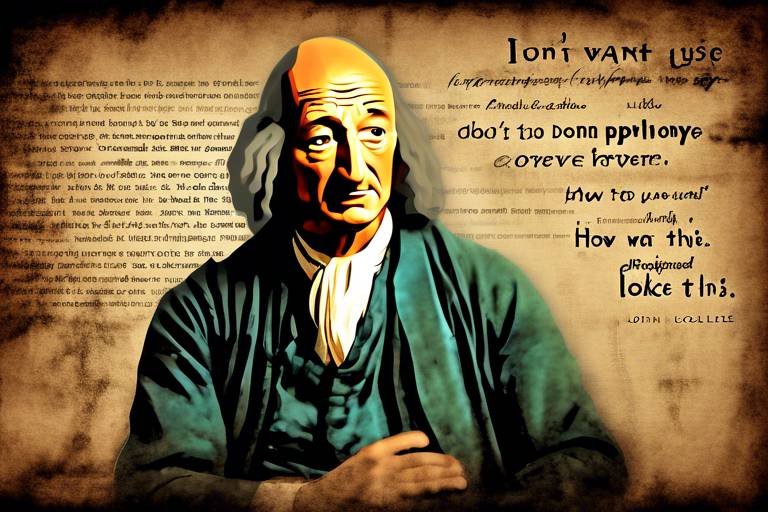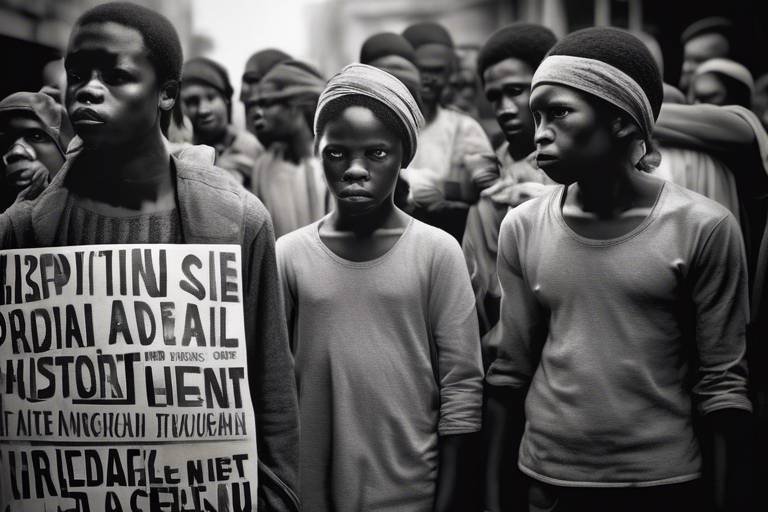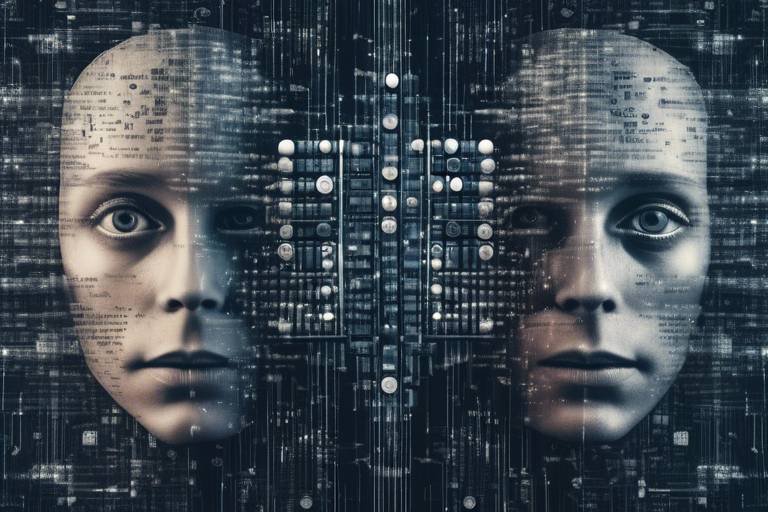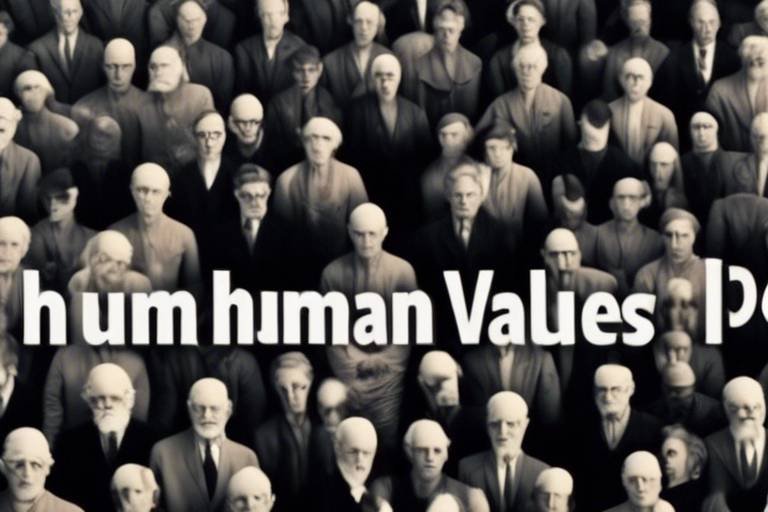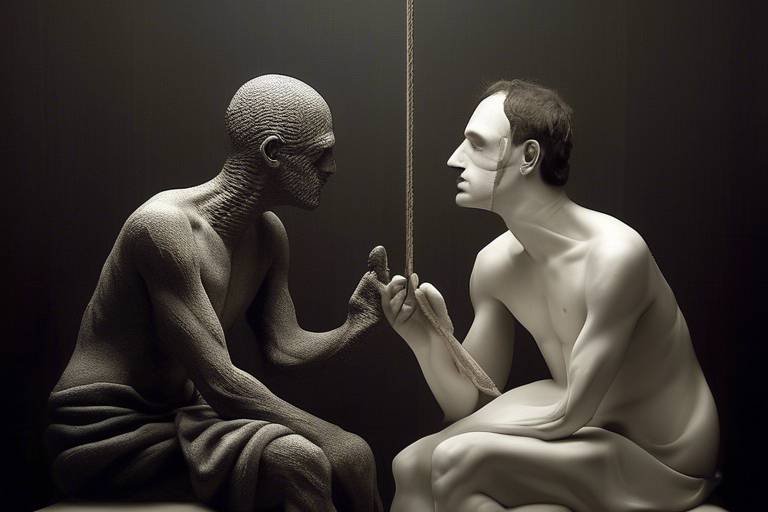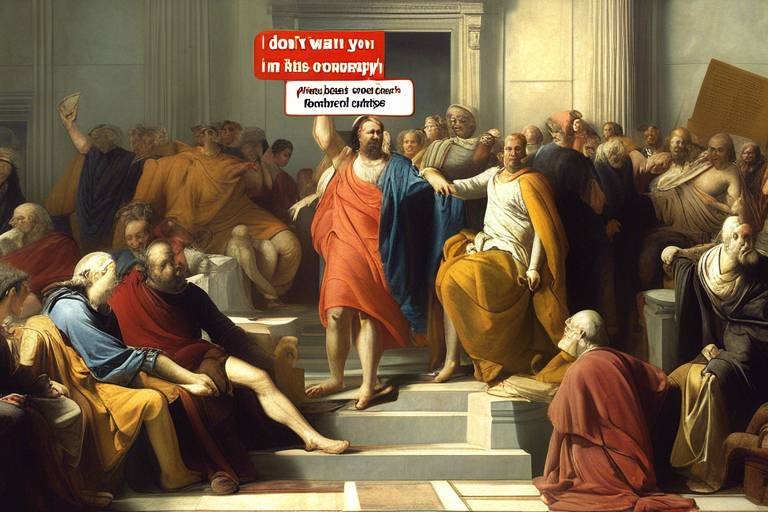Deconstructing Deleuze's Concepts and Philosophies
In the realm of contemporary thought, few philosophers have sparked as much intrigue and debate as Gilles Deleuze. His ideas challenge the conventional frameworks through which we understand our world, urging us to reconsider the very foundations of identity, knowledge, and creativity. This article will take you on a journey through Deleuze's intricate philosophies, unraveling his key concepts and examining their implications for various aspects of life today, including art, politics, and personal identity.
Deleuze's work is often characterized by a desire to break free from traditional philosophical constraints. He invites us to explore the fluidity of existence and the myriad ways in which our experiences shape who we are. By engaging with his concepts, we can gain a deeper appreciation of the complexities of life and how they influence our interactions with one another and the world around us.
As we delve into the heart of Deleuze's philosophy, we'll uncover how his emphasis on difference over identity reshapes our understanding of individuality. This perspective not only highlights the uniqueness of each person but also challenges the societal structures that often seek to categorize and define us in rigid terms. In a world that frequently values conformity, Deleuze's ideas remind us of the beauty and significance of our differences.
Moreover, we will explore the concept of rhizomatic thinking, which presents a non-hierarchical model of knowledge. Unlike traditional linear approaches that often confine us to a single path, rhizomatic thinking encourages a more organic and interconnected understanding of information and relationships. This approach has profound implications for various fields, including education, politics, and even social movements.
Throughout this exploration, we will also touch upon the importance of multiplicity in shaping our identities. Rather than viewing ourselves through the lens of a singular identity, Deleuze's philosophy invites us to embrace the idea of being composed of multiple selves that evolve and change over time. This dynamic understanding of identity can significantly impact how we perceive ourselves and our roles within society.
As we navigate through Deleuze's thoughts on desire and production, we will discover that desire is not merely a lack or yearning but a powerful force that drives creativity and motivation. This perspective can transform how we approach our passions and aspirations, encouraging us to see desire as a source of potential rather than a void to be filled.
Finally, the notion of becoming will be examined, emphasizing continuous change and evolution. Deleuze's concept of becoming is particularly relevant in today's fast-paced world, where personal growth and social movements often require us to adapt and transform. By understanding becoming, we can appreciate the transformative potential within ourselves and the collective efforts of society.
In summary, Deleuze's philosophies offer profound insights into the nature of existence, identity, and creativity. As we dissect these ideas further, we will see how they resonate not only within academic circles but also in our everyday lives. So, buckle up as we embark on this fascinating exploration of Deleuze's concepts and their relevance to contemporary thought!
- Who was Gilles Deleuze?
Gilles Deleuze was a French philosopher known for his influential ideas on difference, desire, and the complexities of identity.
- What is rhizomatic thinking?
Rhizomatic thinking is a non-hierarchical approach to knowledge that emphasizes interconnectedness and the fluidity of ideas.
- How does Deleuze's philosophy apply to art?
Deleuze's concepts have significantly influenced artistic practices, encouraging innovative storytelling and new ways of engaging with art forms.

The Nature of Difference
Gilles Deleuze's philosophy revolves around the profound idea that difference is not merely an accessory to existence but rather its very essence. In a world that often champions identity—the familiar labels and categories that define who we are—Deleuze invites us to flip the script. He argues that difference is what truly propels existence forward, shaping our individuality and the structures of society itself. Imagine a garden where every flower is distinct, thriving not in spite of their differences but because of them; this is how Deleuze perceives the world.
At first glance, this notion might seem abstract, but its implications are incredibly tangible. By prioritizing difference, we start to see ourselves and others not as static entities but as dynamic beings in a constant state of flux. This perspective challenges the traditional view of identity, which often feels like a box we are forced to fit into. Instead, Deleuze encourages us to embrace our unique traits, quirks, and experiences, suggesting that our individualities are not limitations but rather the very fabric of our existence.
Moreover, Deleuze's emphasis on difference extends beyond personal identity into the realm of societal structures. Consider how social norms and expectations often dictate behavior, pushing us toward conformity. By recognizing the importance of difference, we can begin to dismantle these rigid frameworks and foster a culture that celebrates diversity. This shift could lead to more inclusive communities, where various identities coexist and enrich our collective experience.
In practical terms, embracing difference also means rethinking our interactions and relationships. Instead of seeking common ground based solely on shared traits, we might find greater value in understanding and appreciating what makes us different. This approach can lead to deeper connections and a more nuanced understanding of one another. For instance, in conversations, instead of focusing on agreement, we could ask questions like:
- What unique perspectives do you bring to the table?
- How has your background shaped your views?
- What can we learn from our differences?
By engaging with these questions, we open the door to richer dialogues and a broader understanding of the human experience. Deleuze's philosophy, therefore, acts as a guiding light, urging us to embrace difference as a source of strength rather than a barrier.
In conclusion, the nature of difference is not just a philosophical abstraction; it is a call to action. By recognizing and celebrating the differences that define us, we can reshape our understanding of individuality and societal structures. This shift could lead us to a more vibrant, inclusive world where diversity is not just tolerated but celebrated as the essence of life itself.
- What is the main idea behind Deleuze's concept of difference?
Deleuze posits that difference is fundamental to existence, shaping our identities and societal structures. - How does embracing difference impact our relationships?
By valuing differences, we can foster deeper connections and understanding in our interactions. - Why is difference important in society?
Recognizing difference can lead to more inclusive communities and challenge conformity.

Rhizomatic Thinking
When we dive into , we're stepping into a world that flips traditional notions of knowledge on their heads. Imagine a garden filled with interconnected roots, sprawling in every direction, rather than a neatly organized row of plants. This is the essence of rhizomes as proposed by Gilles Deleuze. Unlike the linear models that suggest a hierarchy—where one idea leads to another in a straight line—rhizomatic thinking embraces a more chaotic, yet organic, structure of knowledge. It allows for multiple entry and exit points, encouraging a more democratic exchange of ideas.
In this framework, knowledge is not a rigid structure but a fluid network. This concept can be applied across various fields, from education to technology, and even in our social interactions. For instance, in education, traditional models often rely on a top-down approach, where teachers dispense knowledge to students. However, a rhizomatic approach promotes collaborative learning, where students can explore topics in their own way, fostering creativity and critical thinking. This method encourages learners to connect different ideas, leading to a more profound understanding of the subject matter.
Moreover, rhizomatic thinking resonates deeply with the dynamics of the internet and social media. In these spaces, information spreads rapidly and unpredictably, much like a rhizome. Content is shared, reshaped, and reinterpreted by countless individuals, creating a rich tapestry of knowledge that is ever-evolving. This interconnectedness not only democratizes information but also challenges the authority of traditional institutions, as anyone can contribute to the discourse.
To further illustrate the impact of rhizomatic thinking, let’s look at a few key characteristics:
- Non-hierarchical structure: Ideas can emerge from anywhere and grow in multiple directions.
- Interconnectivity: Knowledge is linked, allowing for cross-pollination of ideas.
- Fluidity: Concepts can change and evolve as they interact with new information.
In essence, rhizomatic thinking encourages us to embrace complexity and uncertainty. It teaches us that knowledge is not a destination but a journey, one that is shaped by our experiences and interactions. This perspective is particularly relevant in today's fast-paced world, where adaptability and innovation are crucial for success.
As we continue to explore the implications of rhizomatic thinking, it becomes clear that this approach not only reshapes how we understand knowledge but also influences how we engage with the world around us. By adopting a rhizomatic mindset, we open ourselves up to a richer, more diverse understanding of reality, one that celebrates difference and fosters creativity.
What is rhizomatic thinking?
Rhizomatic thinking is a concept introduced by Gilles Deleuze that emphasizes a non-hierarchical, interconnected approach to knowledge and organization, contrasting traditional linear models.
How does rhizomatic thinking apply to education?
In education, rhizomatic thinking promotes collaborative and exploratory learning, allowing students to engage with topics in a flexible manner rather than following a strict, top-down approach.
Can rhizomatic thinking be applied to technology?
Yes! The internet and social media exemplify rhizomatic thinking, as information spreads rapidly and is reshaped by users, creating a dynamic and interconnected knowledge landscape.

Multiplicity and Identity
When we think about identity, we often picture a singular, fixed entity—like a snapshot frozen in time. However, Gilles Deleuze shakes up this conventional view with his concept of multiplicity. Instead of a rigid identity, he presents a dynamic and fluid understanding of self, where our identities are not just one thing but a collection of experiences, influences, and transformations. Imagine a river; it’s never the same from one moment to the next, constantly flowing and changing. This analogy perfectly encapsulates Deleuze's idea of multiplicity—our identities are more like rivers than rocks.
In Deleuze's philosophy, multiplicity allows us to embrace the complexity of our existence. We are not confined to a single narrative or identity; rather, we embody many roles and perspectives that shift depending on context and experience. For instance, you might be a friend, a sibling, a professional, and an artist—all at once, and each role informs the others. This interconnectedness creates a rich tapestry of identity, where each thread represents a different facet of who we are.
This fluidity challenges the traditional notions of identity that are often tied to cultural, social, or historical contexts. Instead of viewing ourselves as static beings, multiplicity encourages us to recognize the layers and complexities that comprise our identities. It’s about understanding that we are not just one thing; we are a multitude of experiences and influences that shape who we are. This perspective can be liberating, as it allows for growth and change.
Furthermore, multiplicity extends beyond the individual to collective identities. In a society where people often feel pressured to conform to specific identities, Deleuze’s framework invites us to celebrate diversity and the myriad ways in which identities can coexist. For example, consider a community where individuals come from various backgrounds, cultures, and life experiences. Each person contributes to the collective identity, creating a vibrant mosaic rather than a monotonous portrait.
In practical terms, embracing multiplicity can lead to more inclusive environments, whether in workplaces, schools, or social settings. By acknowledging and valuing the diverse identities within a group, we foster a culture of acceptance and collaboration. This shift in perspective not only enhances interpersonal relationships but also fuels creativity and innovation. When people feel free to express their multifaceted identities, they bring unique ideas and perspectives to the table, enriching the collective experience.
In conclusion, Deleuze's concept of multiplicity offers a refreshing lens through which to view identity. It encourages us to embrace our complexity, allowing for a richer understanding of ourselves and others. By recognizing that we are not just one thing but a multitude of experiences, we open ourselves up to endless possibilities for growth and connection.
- What is multiplicity in Deleuze's philosophy?
Multiplicity refers to the idea that identity is not singular or fixed, but rather a dynamic and fluid collection of experiences and influences. - How does multiplicity affect our understanding of identity?
It challenges the notion of a static identity, allowing for a more inclusive and complex understanding of the self and collective identities. - Why is embracing multiplicity important in society?
Embracing multiplicity fosters inclusivity and creativity, enabling diverse perspectives to coexist and enrich communal experiences.

Desire and Production
In the intricate tapestry of Gilles Deleuze's philosophy, the notion of desire emerges as a powerful and transformative force, one that defies traditional notions of lack and instead positions itself as a wellspring of creativity and production. Unlike the conventional view that sees desire as a mere craving for what is absent, Deleuze invites us to reconsider it as a dynamic, generative energy that propels us toward new possibilities. This reimagining of desire not only reshapes our understanding of motivation but also challenges the very fabric of human behavior.
To grasp the significance of Deleuze's perspective, we must first acknowledge how desire operates in our lives. It is not a static feeling but rather a fluid force that can lead to various outcomes, influencing our actions, relationships, and even societal structures. For Deleuze, desire is inherently productive; it creates connections, sparks innovations, and fosters change. This idea resonates deeply in various domains of life, from art to politics and beyond.
Consider the following aspects of desire and production:
- Desire as Creative Force: Deleuze posits that desire fuels creativity. Artists, writers, and thinkers often draw upon their desires to produce work that resonates with others, transforming personal experiences into collective expressions.
- Desire in Social Contexts: In a societal framework, desire can drive movements and change. When individuals collectively harness their desires, they can challenge existing norms and create new realities.
- Desire and Identity: The interplay between desire and identity is profound. As our desires evolve, so too does our sense of self, leading to a more nuanced understanding of who we are.
This perspective on desire reshapes our approach to various fields. In the realm of art, for example, artists harness their desires to create works that reflect their inner worlds, often challenging societal conventions in the process. Similarly, in politics, movements driven by collective desires for change can disrupt established power structures, highlighting the potential of desire as a catalyst for social transformation.
Furthermore, Deleuze's exploration of desire and production encourages us to embrace a mindset of possibility. Instead of viewing desire as something to be controlled or suppressed, he invites us to see it as a source of empowerment. By acknowledging and channeling our desires, we can unlock new avenues for personal and collective growth, leading to a more vibrant and dynamic existence.
In conclusion, Deleuze's redefinition of desire as a productive force offers a refreshing lens through which we can examine our motivations and actions. It challenges us to rethink our relationship with desire, urging us to embrace its potential to inspire creativity, foster change, and ultimately transform our understanding of what it means to be human.
- What is Deleuze's view on desire? Deleuze sees desire as a productive force that drives creativity and social change, rather than merely a lack or craving.
- How does desire influence identity? Desire plays a significant role in shaping our identities; as our desires evolve, so does our understanding of ourselves.
- Can you give an example of desire in art? Many artists draw upon their personal desires to create works that challenge societal norms and reflect their inner experiences.
- What is the significance of desire in social movements? Collective desires can galvanize communities to challenge established power structures and advocate for change.

Becoming and Transformation
In the realm of Deleuze's philosophy, the concept of becoming is not merely a transition from one state to another; it embodies the essence of continuous change and evolution. Imagine a river flowing, constantly reshaping its banks and carving new paths through the landscape. This analogy captures the fluidity of becoming, where nothing is static, and everything is in a state of flux. Deleuze challenges us to reconsider our understanding of identity, urging us to embrace the idea that we are not fixed entities but rather dynamic processes. This perspective invites us to ask: Who are we becoming today?
Transformation, in this light, becomes a powerful force in personal growth and social movements. It suggests that our identities are not predetermined but are instead crafted through experiences, interactions, and the choices we make. For instance, consider how a caterpillar transforms into a butterfly. This metamorphosis is not just a physical change; it represents a profound shift in existence. Similarly, in our lives, we undergo numerous transformations that shape who we are, often in unexpected ways.
Deleuze's notion of becoming can be applied to various aspects of life, including:
- Personal Development: Embracing change allows individuals to grow beyond their current selves, adopting new skills, perspectives, and ways of being.
- Social Movements: Movements for change, whether they focus on justice, equality, or environmental issues, illustrate how collective becoming can challenge the status quo and inspire transformation.
- Creative Processes: Artists, writers, and thinkers often describe their work as a journey of becoming, where the final product is a reflection of their evolving ideas and experiences.
Moreover, Deleuze emphasizes the importance of affects and relations in the process of becoming. Our connections with others play a crucial role in shaping our identities and experiences. Just as a kaleidoscope creates beautiful patterns through the interplay of colors and shapes, our relationships contribute to the rich tapestry of our lives. This interconnectedness means that transformation is not a solitary endeavor; it is influenced by the world around us.
In summary, the idea of becoming is a call to embrace the dynamic nature of existence. It encourages us to remain open to change, to challenge our assumptions about identity, and to recognize the potential for transformation within ourselves and society. By understanding becoming as an ongoing process, we can better navigate the complexities of life and engage more meaningfully with the world around us.
- What does Deleuze mean by becoming?
Becoming refers to the continuous process of change and evolution in identity, emphasizing that we are not fixed entities but rather dynamic processes shaped by our experiences. - How can the concept of becoming influence personal growth?
By embracing the idea of becoming, individuals can open themselves up to new experiences and opportunities for growth, allowing them to evolve beyond their current selves. - In what ways does becoming relate to social movements?
Social movements illustrate the collective process of becoming, where groups challenge the status quo and inspire transformation in society.

Assemblages and Social Structures
Gilles Deleuze's concept of assemblages offers a fascinating lens through which we can examine the complexities of social structures. At its core, an assemblage is a collection of heterogeneous elements that come together to form a functional whole. This idea challenges traditional notions of fixed identities and hierarchies, suggesting instead that social dynamics are fluid and constantly evolving. Think of an assemblage like a jazz band, where each musician brings their unique sound and style, yet together they create a harmonious piece of music that is greater than the sum of its parts.
In our contemporary world, understanding social structures through the lens of assemblages allows us to appreciate the interconnectedness of various factors—be they cultural, economic, or political. For instance, consider how social movements emerge. They are not simply the product of one ideology or group but rather a complex interplay of different voices, backgrounds, and intentions. This multiplicity is crucial in recognizing that change is not linear; it often involves a chaotic yet creative process where diverse elements come together to challenge the status quo.
Moreover, assemblages can be observed in various contexts, such as urban environments, where different communities, institutions, and infrastructures interact to shape the city's identity. In this sense, cities are not just physical spaces but dynamic assemblages that reflect the diversity of their inhabitants. They embody the struggles, aspirations, and interactions of people from various walks of life, creating a rich tapestry of social relations.
To further illustrate this concept, let's consider a few key components that typically make up social assemblages:
- Individuals: Each person contributes their unique experiences and perspectives.
- Institutions: Schools, governments, and organizations shape the frameworks within which social interactions occur.
- Technologies: Digital platforms and tools play a crucial role in facilitating connections and communication.
- Cultural Practices: Shared rituals, traditions, and norms influence how groups interact and establish identities.
By examining these elements, we can begin to understand how social structures are not merely imposed from above but are instead the result of ongoing negotiations and adaptations among various actors. This perspective encourages us to rethink our approaches to social issues, recognizing that solutions must take into account the complexity and fluidity of the assemblages involved.
In conclusion, Deleuze's idea of assemblages serves as a powerful framework for analyzing contemporary social dynamics. It invites us to embrace complexity and diversity, urging us to look beyond simplistic binaries and acknowledge the rich interplay of forces that shape our world. As we navigate the challenges of modern society, understanding these assemblages can empower us to engage more meaningfully with the issues at hand, fostering a more inclusive and adaptable approach to social change.
- What is an assemblage in Deleuze's philosophy? An assemblage is a collection of diverse elements that interact and form a functional whole, emphasizing fluidity and complexity in social dynamics.
- How can assemblages be applied to social movements? Assemblages highlight that social movements arise from the interaction of various voices and influences, rather than a singular ideology.
- Why is understanding assemblages important? It allows us to appreciate the interconnectedness of social factors and encourages a more nuanced approach to addressing social issues.

Deleuze and Art
Gilles Deleuze’s philosophies have profoundly influenced the realm of art, offering fresh perspectives that challenge traditional ways of thinking. His ideas invite artists and audiences alike to reconsider the very nature of creativity and expression. At the heart of Deleuze's philosophy is the notion that art is not merely a reflection of reality but a dynamic force that shapes our understanding of the world. This transformative view encourages artists to break free from conventional boundaries and explore new forms of representation.
One of the key aspects of Deleuze's impact on art is his emphasis on difference and multiplicity. In contrast to the idea of a singular artistic vision, Deleuze posits that art thrives on diversity and variation. This principle is evident in contemporary art movements where artists embrace a multitude of styles, mediums, and cultural influences. For instance, the rise of postmodernism in art can be seen as a direct response to Deleuze’s call for embracing complexity and rejecting the notion of a single narrative. Artists like Yayoi Kusama and Damien Hirst exemplify this multiplicity, using their work to explore themes of identity, existence, and the human experience.
Moreover, Deleuze’s concept of rhizomatic thinking offers a non-linear approach to understanding artistic practices. Unlike traditional hierarchical structures that prioritize certain forms of art over others, rhizomatic thinking allows for a network of connections that can lead to unexpected intersections. This idea is especially relevant in the age of digital art, where artists can collaborate across disciplines, genres, and platforms. The internet serves as a fertile ground for rhizomatic connections, enabling artists to share their work, ideas, and influences in a way that transcends geographical and cultural boundaries.
In addition to reshaping artistic practices, Deleuze's philosophies have also influenced how we engage with art as spectators. His notion of becoming encourages viewers to approach art with an open mind, allowing for personal interpretations and emotional responses. Rather than seeking definitive meanings, audiences are invited to experience the fluidity and transformation inherent in the artwork. This shift in perspective fosters a deeper connection between the viewer and the piece, transforming the act of viewing into a participatory experience.
As we delve deeper into the interplay between Deleuze's ideas and various art forms, we can see how his philosophies manifest in different mediums:
| Art Form | Deleuze's Influence |
|---|---|
| Visual Arts | Emphasis on multiplicity and the rejection of a singular narrative. |
| Film | Exploration of time and movement, creating new cinematic experiences. |
| Literature | Challenging traditional narrative structures, leading to innovative storytelling. |
In conclusion, Deleuze's philosophies serve as a catalyst for innovation in the arts, inspiring artists and audiences to embrace complexity and fluidity. By understanding art through the lens of difference, rhizomatic connections, and becoming, we open ourselves to a richer, more nuanced appreciation of creative expression. As we continue to explore the implications of Deleuze's thought, it becomes clear that his ideas are not just theoretical; they are practical tools that can help us navigate the ever-evolving landscape of contemporary art.
- How has Deleuze influenced contemporary art? Deleuze's emphasis on difference and multiplicity has encouraged artists to explore diverse styles and narratives, leading to innovative forms of expression.
- What is rhizomatic thinking? Rhizomatic thinking is a non-hierarchical approach to knowledge and organization, allowing for interconnected ideas and collaborations across disciplines.
- How can Deleuze's philosophies enhance the viewing experience? By encouraging viewers to embrace fluidity and personal interpretation, Deleuze's ideas transform the act of viewing into an interactive and participatory experience.

Film and Cinema
Gilles Deleuze's exploration of cinema is nothing short of revolutionary. He doesn't just view film as a medium for storytelling; instead, he perceives it as a complex interplay of time, movement, and perception. Deleuze introduces us to the idea of time-image and movement-image, which fundamentally alters how we engage with films. Where traditional cinema often relies on linear narratives and clear resolutions, Deleuze invites us to embrace a more fragmented and nuanced understanding of cinematic experiences.
Imagine watching a film that doesn't follow the typical beginning, middle, and end structure. Instead, it presents a series of moments that resonate with your feelings and thoughts, challenging you to piece together the narrative in your own way. This is where Deleuze’s concept of the time-image comes into play, emphasizing the importance of time as an active force in cinema. Unlike the movement-image, which is tied to action and causality, the time-image allows for a more fluid representation of time, inviting viewers to experience the depth of moments rather than merely observing events unfold.
For instance, in films like Last Year at Marienbad by Alain Resnais, we see how time can be manipulated to create a sense of disorientation and complexity. The narrative doesn't follow a straightforward path; instead, it loops and spirals, reflecting the characters' psychological states. This technique forces the audience to question their perception and understanding of reality, much like Deleuze's philosophy encourages us to rethink our established notions of identity and difference.
Moreover, Deleuze’s ideas extend beyond the theoretical into practical applications in filmmaking. Directors such as Jean-Luc Godard and Andrei Tarkovsky have employed these concepts to challenge conventional storytelling and create films that resonate on a deeper emotional level. Their works often reflect a rhizomatic structure, where narratives branch out in unexpected directions, much like the roots of a plant spreading underground.
To further illustrate Deleuze's impact on cinema, let's consider a few key films that embody his philosophies:
| Film Title | Director | Key Concept |
|---|---|---|
| Last Year at Marienbad | Alain Resnais | Time-Image |
| Breathless | Jean-Luc Godard | Rhizomatic Structure |
| Stalker | Andrei Tarkovsky | Philosophical Depth |
In conclusion, Deleuze's philosophies on film and cinema not only enhance our understanding of the medium but also encourage us to engage with it on a more profound level. By embracing the complexities of time and movement, we can appreciate films as dynamic experiences that reflect our own perceptions of reality. As we continue to explore the intersection of philosophy and art, it becomes evident that Deleuze's ideas offer invaluable insights into the nature of creativity and expression in film.
- What is the difference between time-image and movement-image?
The movement-image is concerned with action and causality, while the time-image focuses on the representation of time as a complex and fluid experience. - How did Deleuze influence modern filmmaking?
Deleuze's ideas have encouraged filmmakers to explore non-linear narratives and challenge traditional storytelling methods, leading to more innovative and thought-provoking cinema. - Can you give an example of a film that uses Deleuze's concepts?
One notable example is Last Year at Marienbad, which employs the time-image to create a fragmented narrative that reflects the characters' psychological experiences.

Literature and Narrative
Gilles Deleuze's philosophies have profoundly influenced the landscape of literature, pushing the boundaries of traditional narrative structures. His ideas challenge writers to rethink the very fabric of storytelling, inviting a fresh perspective that resonates with the complexities of modern existence. Imagine a world where narratives aren't linear but rather a tapestry of intertwined threads, each representing different possibilities and interpretations. This is the essence of Deleuze's thought, where literature becomes a playground for exploring multiplicity and fluidity.
One of the most captivating aspects of Deleuze's philosophy in literature is his rejection of fixed identities. He proposes that characters should not be confined to rigid roles or archetypes; instead, they should embody multiplicity. This means that a character can be a hero in one moment and an anti-hero in the next, reflecting the unpredictable nature of human experience. For instance, in contemporary novels, we often encounter protagonists who are complex and multifaceted, mirroring the chaotic reality of life itself. This approach not only enriches character development but also encourages readers to engage with the text on a deeper level, questioning their own perceptions of identity.
Moreover, Deleuze's concept of becoming plays a crucial role in literary narratives. Instead of presenting characters as static entities, writers are inspired to depict their journeys of transformation. This dynamic process of becoming allows for a richer exploration of personal growth and change. For example, consider a character who starts as a timid individual but gradually evolves into a bold leader. This narrative arc illustrates the power of transformation, showcasing how experiences shape and redefine who we are. Such storytelling techniques resonate with readers, as they reflect the complexities of their own lives.
In addition to character development, Deleuze's ideas encourage authors to experiment with narrative structures. Traditional storytelling often follows a linear trajectory, with a clear beginning, middle, and end. However, Deleuze advocates for a more fragmented approach, where narratives can unfold in non-linear ways, much like a rhizome. This allows for a multitude of pathways and interpretations, creating a more immersive experience for the reader. Works like House of Leaves by Mark Z. Danielewski exemplify this fragmented narrative style, challenging readers to piece together the story from various perspectives and layers.
Furthermore, Deleuze’s influence extends to the use of language and style in literature. His emphasis on the virtual and the actual encourages writers to explore the potentiality of words, allowing for a more poetic and evocative use of language. This can be seen in the works of authors like Virginia Woolf and James Joyce, who play with stream-of-consciousness techniques and rich imagery to evoke emotions and thoughts that transcend conventional storytelling. The result is a literary experience that feels alive and dynamic, inviting readers to engage with the text in a personal and transformative way.
In conclusion, Deleuze's philosophies have opened up new horizons for literature and narrative construction. By embracing concepts such as multiplicity, becoming, and non-linear storytelling, writers can create works that resonate with the complexities of contemporary life. Readers are no longer passive consumers of stories; they become active participants in the narrative, engaging with the text in ways that reflect their own experiences and identities. This interplay between literature and Deleuze's thought not only enriches the reading experience but also challenges us to rethink our understanding of storytelling itself.
- What is Deleuze's concept of multiplicity in literature?
Multiplicity refers to the idea that characters can embody various identities and roles, reflecting the complexity of human nature.
- How does Deleuze's idea of becoming influence character development?
Becoming emphasizes transformation and growth, encouraging writers to depict characters as dynamic and evolving rather than static.
- What is a rhizomatic narrative structure?
A rhizomatic narrative structure is non-linear and fragmented, allowing for multiple interpretations and pathways within a story.
Frequently Asked Questions
- What is the significance of difference in Deleuze's philosophy?
Deleuze argues that difference is not merely an absence of sameness but is fundamental to existence itself. This perspective challenges traditional views that prioritize identity, suggesting that our understanding of individuality and societal structures should be rooted in the concept of difference.
- How does rhizomatic thinking differ from traditional models of knowledge?
Rhizomatic thinking presents a non-hierarchical approach to knowledge, contrasting sharply with linear models. In a rhizome, any point can connect to any other point, allowing for a more dynamic and interconnected understanding of information, which is especially relevant in today's complex world.
- What does Deleuze mean by multiplicity?
Multiplicity refers to the idea that identity is not singular but fluid and dynamic. This concept allows for a richer understanding of both personal and collective identities, emphasizing that we are always in a state of becoming rather than being fixed entities.
- How does Deleuze's view of desire influence our understanding of motivation?
In Deleuze's framework, desire is seen as a productive force rather than a lack. This shift in perspective transforms how we view motivation and creativity, suggesting that desire drives us to create and engage with the world around us, rather than merely responding to what we lack.
- What does the concept of becoming imply in personal growth?
The idea of becoming highlights continuous change and evolution in our lives. It suggests that personal growth is not a destination but an ongoing process, where we are constantly transforming and adapting to new experiences and challenges.
- How can assemblages help us understand social dynamics?
Assemblages provide a framework for analyzing complex social interactions and structures. By viewing society through the lens of assemblages, we can better understand the fluid and interconnected nature of social issues, allowing for more nuanced discussions and solutions.
- In what ways has Deleuze influenced contemporary art?
Deleuze's philosophies have significantly impacted artistic practices, encouraging artists to explore new forms and concepts. His ideas challenge traditional boundaries, allowing for innovative expressions in various art forms that reshape how we perceive and engage with art.
- How does Deleuze's analysis of cinema change our appreciation of film?
Deleuze's examination of cinema introduces fresh perspectives on time and movement within film. By applying his concepts, viewers can deepen their understanding of cinematic experiences, appreciating the medium's complexities and nuances beyond conventional storytelling.
- What is the impact of Deleuze's ideas on literature and narrative structures?
Deleuze's concepts challenge traditional narrative forms, encouraging authors to experiment with storytelling techniques. This leads to innovative narratives that engage readers in unique and thought-provoking ways, reflecting the fluidity and complexity of human experience.

